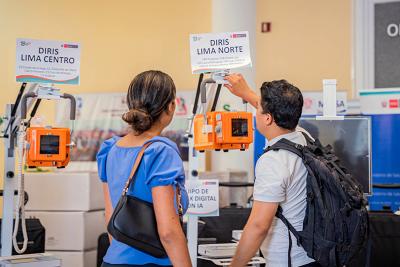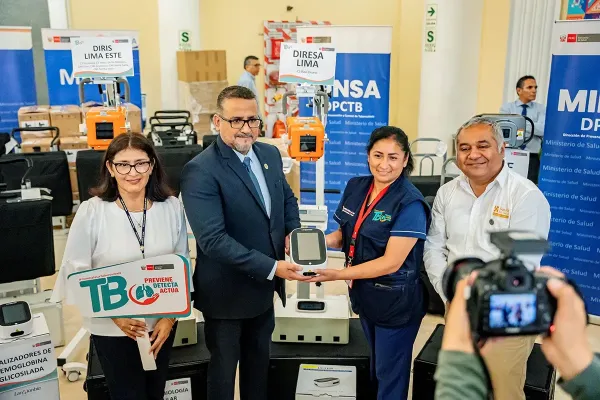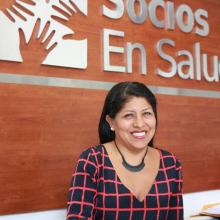Note: The following was originally published in Spanish on Socios En Salud’s blog.
In early February, a ceremony was held with Peru’s Ministry of Health (MINSA, by its Spanish acronym) to deliver modern equipment with radiology, artificial intelligence (AI), and molecular biology capabilities that will help facilitate the early detection of tuberculosis (TB) in the Peruvian population and strengthen health services overall. This new equipment has been delivered to health facilities at the first level of care.
The acquisition of this equipment is in response to an objective set by the Directorate of Tuberculosis Prevention and Control within MINSA to reduce exposure to tuberculosis to 95 or less new cases per 100,000 inhabitants by 2026. The procurement of this new equipment, financed by the Global Fund, happened within the framework of Peru’s TB-HIV Country Project 2022 - 2025, was coordinated by MINSA and the National Multisectoral Health Coordinator, and is being executed by Socios En Salud, as Partners In Health is known in Peru.
“The work that the implementing body [of the TB HIV Country Project], which is Socios En Salud in partnership with MINSA, has been carrying out is a joint technical-scientific effort based on evidence, which allows us to ensure that each step we take will be a step that represents results in the fight against tuberculosis,” said Dr. Eric Peña Sánchez, vice minister of health.

Photo by Julio López / PIH
What impact will this new equipment have in the fight against TB?
The new supplies include 28 X-ray machines equipped with AI for the detection of abnormal chest films; 33 TRUELAB molecular biology devices for rapid and reliable confirmation of tuberculosis infection; and 60 glycosylated hemoglobin analyzers, 60 electrocardiographs, and 3 spirometers for patient monitoring and diagnosis of the long-term effects of tuberculosis treatment.
Dr. Leonid Lecca, executive director of Socios En Salud, highlighted that this acquisition will contribute, first of all, to continuing to actively search for tuberculosis cases using portable X-rays and artificial intelligence.
“The next important step has to do with improving monitoring and treatment. Now, we have changed to shortened oral treatments, of shorter duration, for people with multidrug-resistant TB, and equipment is being purchased to carry out pharmacovigilance, to see the adverse events and safety of the medication,” said Lecca.
In that sense, this equipment translates into greater technology reaching patients with TB early in their care, so they can benefit from early diagnosis and receive effective treatment quickly. Earlier detection of TB will also help prevent its further spread within the population.

Photo by Julio López / PIH
Where will the equipment be distributed?
The equipment has been distributed to health facilities in areas with a high incidence of TB, strategically selected according to their level of complexity to ensure efficient and accessible care for the population.
Throughout Lima and other regions of the country, patients will see this equipment incorporated into their care. Health establishments of the Armed Forces, the National Police of Peru, and the National Penitentiary Institute have also received equipment, ensuring that coverage is comprehensive and reaches key sectors of the health system.

